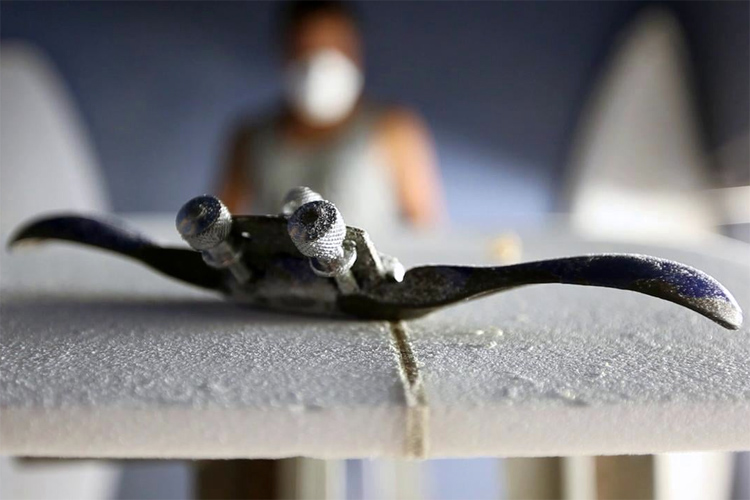Surfboard shapers are daily exposed to chemical, textile and plastic materials. How do they affect craftsmen and surfers' health?
Surfboards are works of art, objects of desire. The perfect surfboard may take a lifetime to develop. Surfboard shapers are continuously improving their skills and techniques.
Surf materials are always changing, too. Board builders seek the best blanks, resins, and inks.
Although the art of shaping wooden and organic surfboards is gaining new ground, the truth is that surfboards are products of modern compounds.
"The material which a surfboard is made of is generally based on the discoveries of thermoplasts", explains Ognjen Markovic, Ophthalmologist and Specialist in Occupational Medicine, in the European Association of Surfing Doctors website.
"Products like resins or foams are included in this group making the most part of board materials, but also fins are made out of plastic evolving form polymer technology."
"A polymer is an assembly of small organic molecules called monomers. 'Poly' means multiple, and 'mono' means singular. So Polymers means many monomers. There are many possibilities to use polymers and create all sorts of different materials and properties."
Types of Foam
There are two main types of polyurethane foam used by the surf industry when it comes to surfboard shaping: Toluene Diisocyanate (TDI) and Diphenylmethane Diisocyanate (MDI).
Almost all surfboard producers use or used TDI foams compared to the rest of the commercial industry who prefers MDI foams.
Although the health risks of TDI are starting to become obvious, the advantages compared to MDI are better flexibility, durability, shaping properties, and perfect alignment with the resins used for the finish. So, TDI is still very attractive for the surfboard industry.
Dissocyanates share a fundamental health risk - asthma, under the olfactory (smelling) threshold, but also connections to carcinogenicity (cancer inducing) of TDI is discussed and evaluated, as well as the modification of immune system produced by these substances.
Spray paint and clear acrylic coatings may cause blindness, nose and eye irritation, lung hemorrhage, and degenerative changes in the liver and kidneys. Wearing masks and respirators is critical.
Finally, a word on Polyethylene (PE). This foam is frequently found in surf school boards and bodyboards.
It has been understood that one of the most common surf injuries in surfing beginners is skin abrasion caused by soft board decks.
Take a look at the main types of surfboard foam blanks.
